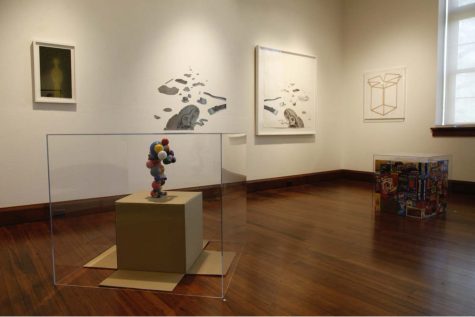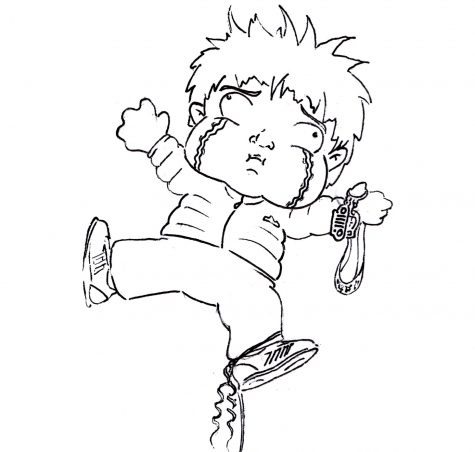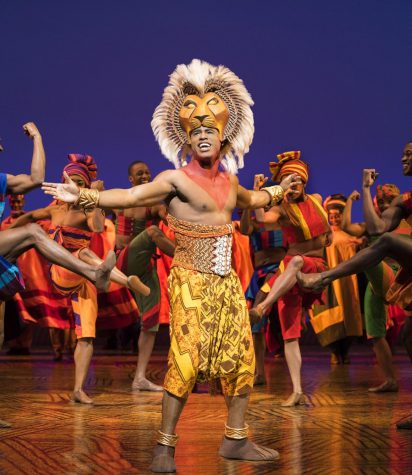Understanding #MeToo and #Time’sUp
February 20, 2018
By now, you have all heard about the #metoo movement. You probably didn’t know, though, that the Me Too movement was actually founded 11 years ago on MySpace by Tarana Berke, a social activist and the senior director at Girls for Gender Equity. On October 15, 2017, actress Alyssa Milano brought national attention to the phrase, tweeting: “If you’ve been sexually harassed or assaulted write ‘me too’ as a reply to this tweet.” She attached an image containing the words: “Me Too. Suggested by a friend: ‘If all women who have been sexually harassed or assaulted wrote ‘Me Too’ as a status, we might give people a sense of the magnitude of the problem.’ In the subsequent 48 hours, “#metoo” was tweeted almost a million times. Less than 24 hours after the tweet, there were over 12 million posts, comments, and reactions of the hashtag on Facebook by 4.7 million people.
Me Too centers around the slogan “empowerment through empathy” — survivors helping survivors. Over 17.7 million women have reported a sexual assault since 1998. This staggering number does not even include the vast majority of sexual assaults that go unreported. The Me Too movement aims to broaden the awareness of this problem. They strive to promote the mantra that as a sexual assault survivor, you are not alone, and you are not at fault for what happened to you. TIME magazine named “The Silence Breakers,” the brave women who came forward to share their experiences with sexual assault, their Person of the Year in 2017. The Me Too website says, “By bringing vital conversations about sexual violence into the mainstream, we’re helping to de-stigmatize survivors by highlighting the breadth and impact sexual violence has on thousands of women, and we’re helping those who need it to find entry points to healing. Ultimately, with survivors at the forefront of this movement, we’re aiding the fight to end sexual violence. We want to uplift radical community healing as a social justice issue and are committed to disrupting all systems that allow sexual violence to flourish.” The movement inspired a new bill, titled the Member and Employee Training and Oversight On Congress Act (ME TOO) Bill. This new bill would transform sexual harassment policies in Congress itself and end the mandatory “cooling off” period for staffers. This is just one example of the far reaching and important impacts from the Me Too movement.
The Time’s Up movement focuses specifically on sexual misconduct, inequality, and injustice in the workplace. They aim to bring awareness, create new legislation, and educate women on their rights, and destroy the passivity of people who witness and experience casual sexual harassment while working. The Time’s Up Legal Defense Fund was created to provide monetary support for the legal fees of women who are victims of sexual harassment in the workplace. So far, they have raised almost $20 million on their GoFundMe page. On January 1, 2018, the Time’s Up organization released their official letter of solidarity, which was reposted and shared by hundreds of people of all ages and genders, famous and non-famous alike, over many forms of social media. Over the past few months, dozens of celebrities have shared their stories over various platforms. This movement has brought light to the previously disregarded misogynistic culture in Hollywood. Powerful men including Harvey Weinstein, a previously highly respected and successful movie director and media mogul, Matt Lauer, previous NBC Today Show host, and Louis CK, a famous comedian, among many others, have lost their jobs and been publicly shamed after countless women have spoken out against their behavior. Most recently, stars, both male and female, wore white roses on the Grammys red carpet to show their solidarity and peaceful resistance. The color white has long been a symbol of women’s equality. Many celebrities also wore black outfits and #Time’sUp pins to the Golden Globes to show their support for the movements.
But why is this so important? Sexual assault statistics are alarming. RAINN.org reports the following statistics, gathered from the National Crime Victimization Survey by the Department of Justice: Every 98 seconds an American is sexually assaulted. Every eight minutes, that victim is a child. Meanwhile, only six out of every 1,000 perpetrators will end up in prison. One out of every six American women has been the victim of an attempted or completed rape in her lifetime. Among undergraduate students, 23.1% of females and 5.4% of males experience rape or sexual assault through physical force, violence, or incapacitation. Approximately seven out of 10 of sexual assaults are committed by someone known to the victim. NBC reports that nearly half of working women in the U.S. say they have experienced harassment in the workplace. Being aware of these statistics is important so that we, as the rising workplace generation, can create a long lasting change and promote an environment of peace and equality. Please consider donating to either movement.
Personally, I believe these movements are incredible, but I’m alarmed that it has taken this long for this problem to really garner national attention and scrutiny. I can speak from firsthand experience in saying that sexual assault is one of the most horrendous experiences, and it has lasting detrimental effects. The fact that people like Harvey Weinstein and Larry Nassar were respected and trusted and able to continue this abuse towards women for decades without anyone intervening is repulsive. Brave women tried to speak up and were ignored. It is time for this extremely prevalent issue to be properly addressed in both the workplace and our culture as a whole. It’s not funny. It’s not something to be joked about. MeToo and Time’sUp have finally started to shed light on sexual assault and are helping women find the help they need. I, along with millions of other people, am eternally grateful.








